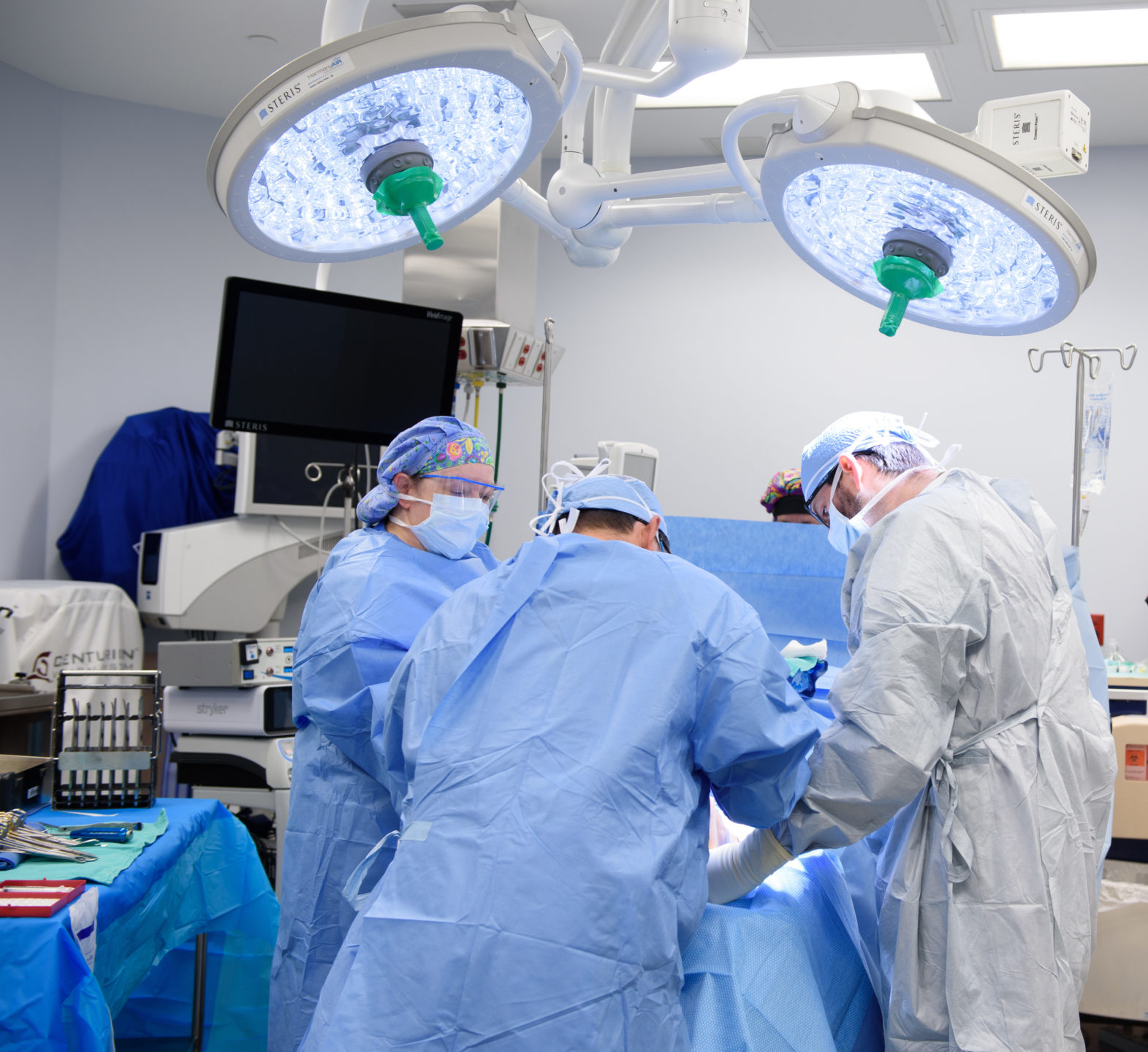Arthroscopic Surgery for Elbow Conditions
The elbow is one of the most complex joints in the body, with three different bones held together by ligaments surrounded by two separated muscles. Three major nerves also cross over the joint, making any elbow surgery a delicate procedure that requires the utmost precision.

Because of this complexity, orthopedic surgeons rely on elbow arthroscopy to treat joint problems. The expert hand, wrist, and elbow surgeons of North Carolina Specialty Hospital bring this option to patients in the Raleigh-Durham area, ensuring they can receive the care they need with less pain, shorter recovery times, and greater joint mobility.
What is Elbow Arthroscopy?
The word arthroscopy comes from the Greek words for “joint” (arthro) and “to look into” (skopein). This is an accurate description of arthroscopic procedures, which involve making tiny incisions and inserting a camera to get a close-up view of the joint. The surgeon looks at the images from the camera on a screen to make a diagnosis and then uses miniature surgical instruments to perform the surgery.
Elbow arthroscopy, therefore, is a minimally invasive approach to elbow surgery. It allows the surgeon to make tinier incisions and use smaller instruments than traditional open surgeries, reducing the recovery time required.
Who is a Candidate for Elbow Arthroscopy?
Surgeons typically recommend arthroscopic elbow procedures if a patient’s condition does not respond to nonsurgical interventions such as rest, physical therapy, and medication.
Elbow arthroscopy can diagnose and treat a wide range of conditions, including:
- Lateral epicondylitis (tennis elbow)
- Fractures
- Arthritis (both osteoarthritis and rheumatoid arthritis)
- Scar tissue removal or release to improve range of motion
- Loose body removal (for example, loose cartilage or bone fragments from an injury)
- Osteochondritis dissecans elbow (reduced blood flow to the end of a bone that causes it to die and leads to pain and reduced mobility)
Some common elbow conditions are better treated using open surgery rather than elbow arthroscopy. Patients with medial epicondylitis (golfer’s elbow) or who need ligament repairs or a full joint replacement, for example, typically need open surgery. Patients should discuss all options with their orthopedic surgeon to determine the best solution to their issue.
What to Expect from an Arthroscopic Elbow Procedure
If your orthopedic surgeon recommends elbow arthroscopy, you will undergo a medical evaluation to confirm you are healthy enough for surgery. Typically, the procedures are performed on an outpatient basis, under general anesthesia.
During the procedure, you will lie on your side or stomach to give the surgeon easy access to your elbow. Your joint will be filled with fluid to make the elbow structures more visible on the camera, and then the surgeon will make a series of small incisions for the camera and instruments.
After thoroughly inspecting the inside of the joint, the surgeon will make the necessary treatments. When complete, the incisions are closed and dressed. Your arm may be plaster-cast to restrict movement during recovery.
Post-Surgical Recovery
After spending a few hours in the recovery room, most elbow arthroscopy patients are released to go home. Elbow arthroscopy recovery is shorter than that of open surgery, but you should still plan to spend at least six to eight weeks limiting your activity while your elbow heals.
It is important to follow your doctor’s instructions after any type of elbow surgery. These are likely to include directions for:
- Moving your elbow, including when and how much.
- Wearing a sling for comfort. In most cases, the sooner you stop using the sling, the better, as overuse can cause stiffness.
- Lifting, in particular not lifting any object that will put a strain on the elbow.
- Completing a program of physical therapy, including at-home exercises.
- Taking medication as prescribed.
Your doctor will let you know when you can return to work and resume normal activities. How soon that occurs depends on the type of surgery you had and your progress toward recovery.
Risks Associated with Elbow Arthroscopy
As with any surgical procedure, there are risks associated with elbow arthroscopy. Your doctor will review them with you, but some of the most common risks include:
- Infection
- Nerve or vessel injury
- Bleeding
- Stiffness
- Failure of the repair
- Blood clots
Individual risks depend on the specific type of surgery being performed. Even if complications do arise, most are minor and treatable.
Elbow Surgery at North Carolina Specialty Hospital
The Hand, Wrist, and Elbow Specialists at North Carolina Specialty Hospital are among the leading orthopedic surgeons in North Carolina. The team includes multiple board-certified, fellowship-trained surgeons who have the experience, expertise, and commitment to advanced surgical approaches that result in the highest level of care for patients of all ages.
If you want to learn more about surgical options for an elbow injury or condition at NCSH, request an appointment with an orthopedic surgery provider today.
